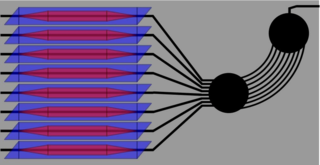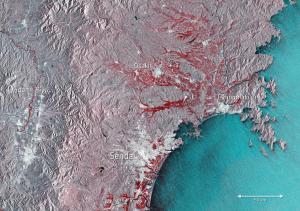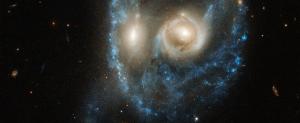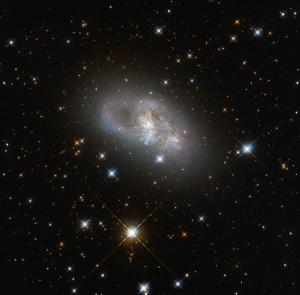Science
25 Years of Science in the Solar Wind
[Image]
(B) An artist's illustration of the Wind spacecraft, which launched 25 years ago in 1994.
(C) NASA missions continue to use Faraday cups to study the solar wind, much like the Solar Wind Experiment from Wind that launched in 1994, on the left. On the right is the Parker Solar Cup aboard Parker Solar Probe, which launched in 2018.
- Read more
- 290 reads
WFIRST Will Add Pieces to the Dark Matter Puzzle

Entangled among the galaxies in this Hubble image are mysterious-looking arcs of blue light. These are actually distorted images of remote galaxies behind the cluster. The collective gravity of all the normal and dark matter trapped inside the cluster warps space-time and affects light traveling through the cluster toward Earth.
- Read more
- 338 reads
Spitzer Telescope Spots a Ghoulish Gourd

This infrared image from NASA's Spitzer Space telescope shows a cloud of gas and dust carved out by a massive star. A drawing overlaid on the image reveals why researchers nicknamed this region the "Jack-o'-lantern Nebula."
- Read more
- 309 reads
Sonoma County Kincaid Fire Races Through 20,000 Acres in Two Days

Sonoma County Kincaid Fire Races Through 20,000 Acres in Two Days
- Read more
- 333 reads
NASA Taps Telecommunications Technology to Develop More Capable, Miniaturized Spectrometer

This schematic shows an application of arrayed waveguide gratings, a technology developed by the telecommunications industry, combining eight laser arrays (left) to a single waveguide (far right) that would deliver specific infrared wavelengths ultimately to a detector.
- Read more
- 323 reads
First identification of a heavy element born from neutron star collision

Artist’s impression of strontium emerging from a neutron star merger
- Read more
- 319 reads
Human Rights
Fostering a More Humane World: The 28th Eurasian Economic Summi

Conscience, Hope, and Action: Keys to Global Peace and Sustainability

Ringing FOWPAL’s Peace Bell for the World:Nobel Peace Prize Laureates’ Visions and Actions

Protecting the World’s Cultural Diversity for a Sustainable Future

Puppet Show I International Friendship Day 2020





